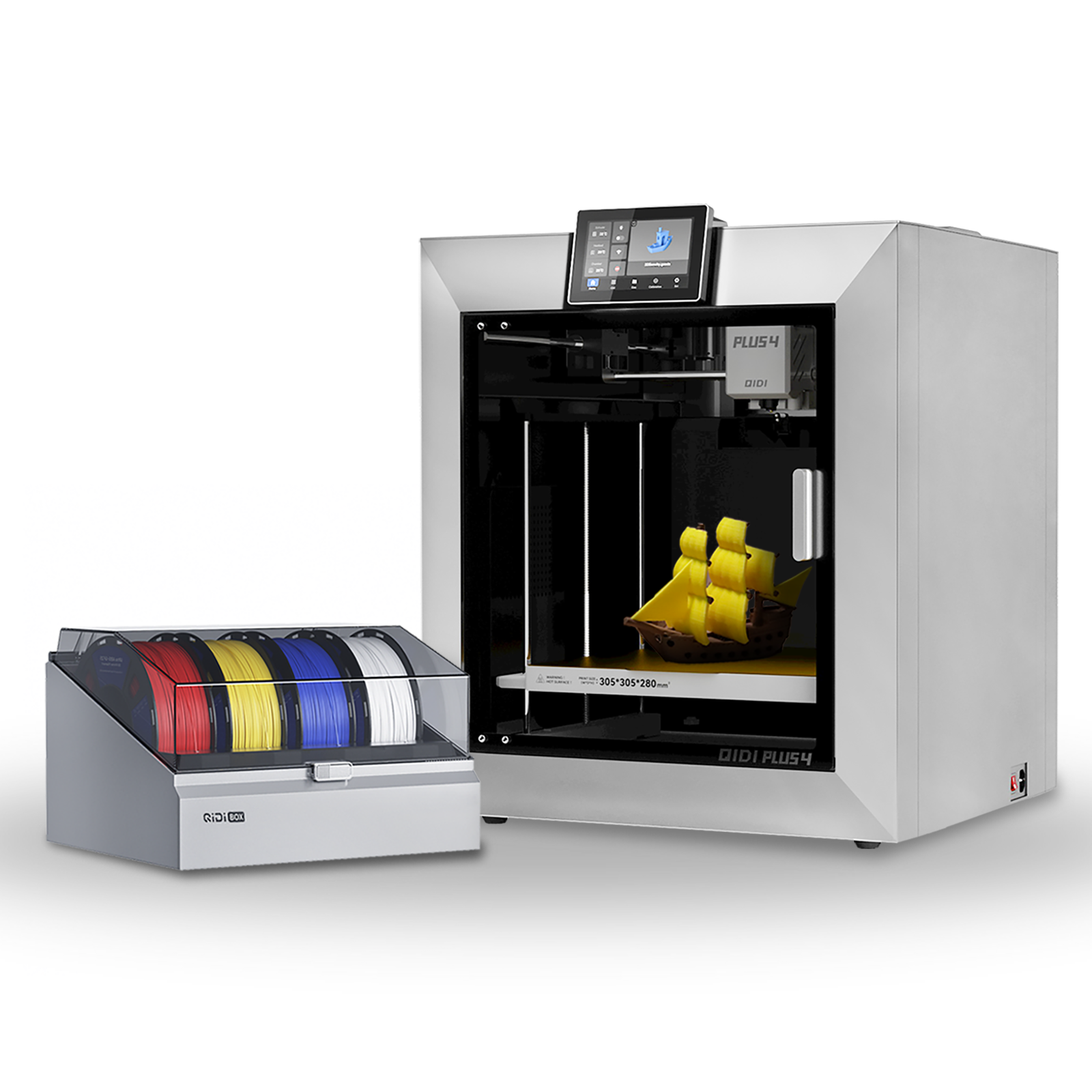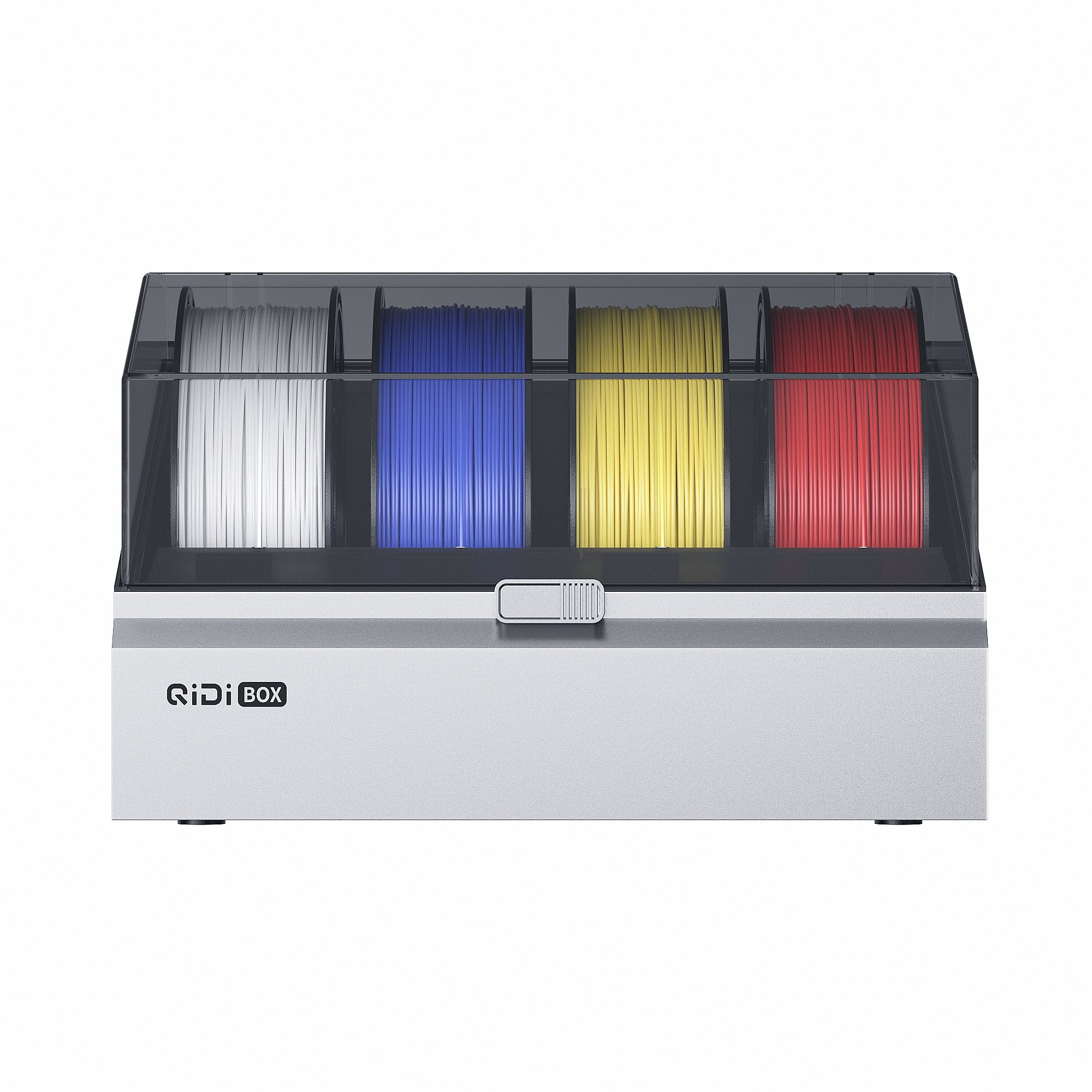3D -printervedligeholdelsesomkostninger og måder at reducere dem på

Selvom 3D-printere giver dig mulighed for at skabe alle mulige slags objekter lige derhjemme, er omkostningerne ved at holde dem kørende problemfrit over tid noget at tænke over. Korrekt vedligeholdelse er nøglen til at få mest muligt ud af din 3D-printer og få den bedste ydeevne. I denne artikel vil vi se på de forskellige ting, der påvirker, hvor meget det koster at vedligeholde en 3D-printer - såsom de materialer, du bruger, dele, der slides og skal udskiftes, professionel reparation om nødvendigt, elforbrug og tips til, hvordan du passer godt på din printer for at reducere udgifterne. Det er vigtigt at få de indledende og løbende vedligeholdelsesomkostninger rigtige, hvis 3D-print skal give økonomisk mening på lang sigt.

Omkostningerne ved at komme i gang med 3D-printning
Hvor meget koster 3D-printere i starten?
En af de største faktorer i de samlede vedligeholdelsesomkostninger ved 3D-printning er den indledende pris for at købe selve 3D-printeren. 3D-printere på begynderniveau kan være relativt overkommelige, og nogle desktopmodeller fås for $200-$300. Disse budgetvenlige muligheder har dog en tendens til at have mindre byggevolumener og mere basale funktioner. Hvis du overvejer en billigere model, kan du læse vores artikel "Skal jeg købe en billig 3D-printer?"for at hjælpe med at træffe en informeret beslutning.
For hobbyister eller dem, der ønsker flere printmuligheder, skal du sandsynligvis bruge $500-$1.500 på en mere avanceret 3D-printer.
Den mest eksklusive professionelle 3D-printere kan koste 2.000 USD eller mere. Disse er designet til industriel/kommerciel brug med førsteklasses komponenter, massive byggevolumener, høj præcision og hurtige udskrivningshastigheder. Om dette emne, læs denne vejledning for at lære mere: Hvad er forskellen mellem hobby- og kommercielle 3D-printere?
Byggevolumen påvirker omkostninger
Som en generel regel vil 3D-printere med større byggevolumener, der er i stand til at printe større objekter, koste mere end dem med mindre byggeområder. Byggevolumen er en af de vigtigste specifikationer at overveje baseret på dine tilsigtede anvendelser.
Faktorer for brandomdømme i
Ligesom med de fleste produktkategorier betaler du en merpris for 3D-printere fra etablerede, velrenommerede mærker i forhold til printere uden for mærket eller white-label-printere med lignende funktioner. Den højere pris giver dig bedre kundesupport, opfattet kvalitet og brandgenkendelse.
Så kort sagt, budgetter omkring 200-500 kr. en prisvenlig 3D-printer til begyndere, $500-$1.500 for en entusiastmodel og $2.000+ for avancerede professionelle og kommercielle 3D-printere. Overvej dine behov, dit budget, og anerkend, at du får, hvad du betaler for, med hensyn til byggevolumen, funktioner og mærke.
Løbende omkostninger ved 3D-printmaterialer

Filament og harpiks - Printmaterialerne
For rent faktisk at printe 3D-objekter skal du bruge en kontinuerlig forsyning af rå printmaterialer. Disse findes i to hovedformer:
- Filament: Filament er det faste plastmateriale, der smeltes og ekstruderes til FDM (fused deposition modeling) 3D-printere. Det leveres på spoler i forskellige materialetyper som PLA, PETG, ABS osv. Almindelige filamentstørrelser er 1,75 mm og 2,85 mm i diameter.
- Harpiks: Harpiks er det flydende fotopolymermateriale, der anvendes i SLA (stereolitografi) og DLP (digital lysbehandling) 3D-printere. Harpiksen hærdes lag for lag med UV-lys.
Gennemsnitlige omkostninger til filament og harpiks
I gennemsnit koster en spole filament på 1 kg mellem 30 og 60 dollars afhængigt af materialetype og mærke. Harpikser koster typisk 30-100 dollars pr. liter flaske.
Køb i løs vægt for lavere pris pr. vægt
De fleste producenter af filament tilbyder rabatter, hvis du køber multipakker eller større spoler over 1 kg. For eksempel tilbyder QIDI Tech en række Højtydende filamenter med attraktive bulkrabatterNår du køber 2 spoler, får du 15% rabat; køb af 3 spoler giver dig 20% rabat; og hvis du køber 4 eller flere spoler, kan du spare 25% på din ordre. For deres almindelige materialer er besparelserne endnu større: køb af 2 spoler giver dig 20% rabat, 3 spoler kommer med 30% rabat, og køb af 4 eller flere spoler sparer dig 35% af den normale pris. Disse løssalgsrabatter reducerer betydeligt... gennemsnitlig pris pr. kilogram filament.
Omkostninger ved udskiftning af slidt 3D-printers Dele

Dele, der skal udskiftes til sidst
Uanset hvor godt du passer på din 3D-printer, vil visse dele slides ned og skal udskiftes efter meget brug:
- Print senge: Den flade overflade, hvorpå objekter printes, kan blive ridset, bulet eller skæv på grund af al opvarmning og afkøling. At udskifte printpladen hjælper objekterne med at hæfte ordentligt igen.
- Dyser: Den lille dyse, der klemmer den smeltede plastik ud, kan blive tilstoppet eller slidt ned, hvilket får udskrifterne til at se rodede ud. Udskift den med en frisk dyse retter udskriftskvaliteten.
- Fans: De små ventilatorer, der blæser luft for at holde tingene kølige, er tilbøjelige til at gå i stykker med tiden. Udskiftning af defekte ventilatorer forhindrer varmeproblemer.
- Remme/Remskiver: Gummibåndene og plastikremskiverne, der bevæger printerarmene frem og tilbage, kan glide eller knække efter tusindvis af timers udskrivning.
Omkostninger til reservedele
Du kan normalt få en ny printplade for 20-50 dollars afhængigt af størrelsen. Pakker med dyser koster 10-30 dollars. Udskiftningsblæsere koster 5-20 dollars pr. stk. Nye remme koster 5-15 dollars pr. akse, de bevæger sig.
Selvom det kan være fristende at vælge billigere reservedele fra tredjepart, anbefales det kraftigt at køb originale dele direkte fra producenten af din 3D-printerDisse dele er specielt designet og testet til at fungere problemfrit med din printermodel, hvilket sikrer optimal ydeevne og levetid. Derudover hjælper brugen af originale dele med at opretholde din printers garanti og reducerer risikoen for kompatibilitetsproblemer eller yderligere skader på din maskine.
Professionelle vedligeholdelsestjenester til 3D-printning
Hvornår skal man bruge en reparationsservice
Da nogle 3D-printerproblemer kan løses gennem gør-det-selv-fejlfinding, kan der være tidspunkter, hvor professionel reparation er nødvendig:
Store hardwarefejl
Hvis kritiske komponenter som styrekortet, motorer eller den opvarmede byggeplade svigter, skal du sandsynligvis have en ekspert i reparation, medmindre du er meget teknisk kyndig.
Software-/firmwareproblemer
Problemer med slicing-software, firmwareopdateringer eller korrekt start af udskrifter kan kræve professionel hjælp.
Opsætning efter køb
Mange vælger at have en 3D-printer professionelt opsat og korrekt kalibreret ud af kassen for at sikre optimal ydeevne fra starten.
Typiske serviceomkostninger
Afhængigt af problemet opkræver professionelle 3D-printerreparationstjenester typisk $100-$300 for arbejdsløn plus eventuelle nødvendige dele. Mere komplekse reparationer kan koste op til $500 eller mere.
Nogle 3D-printerproducenter, som f.eks. QIDI Tech, har deres egne professionelle eftersalgsteams der kan hjælpe med at fejlfinde og løse maskinproblemer, som kunder rapporterer inden for garantiperioden.
Gør-det-selv-reparationer for at spare omkostninger
De, der er vant til at arbejde med elektronik og mekanik, kan selv forsøge at reparere mange 3D-printere ved at finde vejledninger og reservedele online for at reducere eller undgå servicegebyrer.
Samlet set er det nogle gange den bedste måde at få en 3D-printer af god kvalitet repareret af en professionel til hurtigt at få den til at køre korrekt igen.
Tips til en overkommelig 3D-printers Opretholdelse
Korrekt printerpleje og -håndtering
Den måde, du behandler og håndterer din 3D-printer på, gør en stor forskel for at holde vedligeholdelsesomkostningerne nede. Det er vigtigt at passe godt på den fra starten - hold det rent ved regelmæssigt at tørre støv eller snavs af. Håndter den forsigtigt, og undgå at tabe eller støde den. Følg alle producentens retningslinjer for korrekt opsætning og betjening. Brug kun de godkendte materialer og indstillinger, der anbefales til din printermodel.
Hav en forebyggende vedligeholdelsesrutine
Lidt rutinemæssig vedligeholdelse hist og her rækker langt. Tjek ventilatorer og udluftningsåbninger for tilstopninger og tilstopninger med jævne mellemrum. giv dysen en rengøringSpænd eventuelle løse skruer, remskiver eller remme, der måtte være gået løs. Hvis nogen af de bevægelige dele støjer, så kom en klat smøremiddel på dem. Glem ikke at opdatere printerens firmware og udskæringssoftware når der også kommer nye versioner.
Lær at fejlfinde almindelige problemer
Mange almindelige problemer med 3D-printning dårlig lagvedhæftning, trådede udskrifter, ujævne lag og mere kan normalt løses ved grundlæggende fejlfinding. Start med at kontrollere, at byggepladen er korrekt nivelleret og kalibreret. Eksperimenter derefter med at justere temperaturer, udskrivningshastigheder, tilbagetrækningsindstillinger og prøv forskellige materialer, indtil det udskriver problemfrit. Der findes masser af vejledninger online med løsninger på specifikke problemer.
Køb kvalitetsmaterialer og -dele
Selvom du kan finde forbrugsvarer fra andre mærker til en lavere pris, betaler det sig at holde sig til kvalitetsmaterialer og -dele fra velrenommerede mærker. Du får langt mere pålidelige og ensartede printresultater. Og komponenterne vil sandsynligvis holde længere, før de skal udskiftes. De fleste kvalitetsmærker tilbyder også bedre garantier og kundesupport. Så prioriterer du kvalitet frem for bundpriser på ting som filament og dyser sikrer højere succes med 3D-printningog lavere vedligeholdelsesomkostninger på lang sigt.
Maksimer din 3D-printinvestering gennem korrekt vedligeholdelse
3D-printning derhjemme er fantastisk, men omkostningerne til materialer, udskiftninger, reparationer og elektricitet kan virkelig løbe op. Rutinemæssig vedligeholdelse af din printer gennem rengøring, mindre vedligeholdelse og fejlfinding betaler sig stort. Investering i kvalitetsmærkede forbrugsvarer betyder mere pålidelige print og færre hovedpiner på lang sigt. Hvis du budgetterer realistisk for både de indledende og løbende vedligeholdelsesudgifter, forbliver 3D-printning en overkommelig hobby eller forretning. Gå ikke på kompromis - følg bedste praksis for at maksimere din 3D-printers levetid.


 Q2
Q2
 Plus4
Plus4
 Qidi Box
Qidi Box
![[Qidi X-CF Pro, speziell für den Druck von Kohlefaser und Nylon entwickelt] - [QIDI Online Shop DE]](http://eu.qidi3d.com/cdn/shop/files/3034a1133efe01daba919094b70c6310.jpg?v=1750300120) Q1Pro
Q1Pro
![[Qidi X-CF Pro, speziell für den Druck von Kohlefaser und Nylon entwickelt] - [QIDI Online Shop DE]](http://eu.qidi3d.com/cdn/shop/products/X-MAX3-3D-Printer-02.png?v=1750300138) Max3
Max3
 I-Fast
I-Fast

